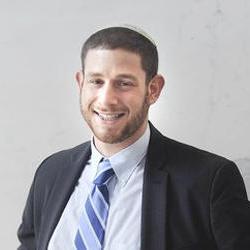Call and Response

משנה סוטה ז:ב-ג(א)
ואלו נאמרין בלשון הקדש, מקרא בכורים, וחליצה, ברכות וקללות, ברכת כהנים, וברכת כהן גדול, ופרשת המלך, ופרשת עגלה ערופה, ומשוח מלחמה בשעה שהוא מדבר אל העם
מקרא בכורים כיצד, (דברים כו) וענית ואמרת לפני ה׳ אלהיך, ולהלן הוא אומר (שם כז) וענו הלוים ואמרו, מה עניה האמורה להלן בלשון הקדש, אף כאן בלשון הקדש
And these are said [only] in the Holy Language: the first-fruits offering formula [Deut. 26:3–10]; the rite of removing the shoe [Deut. 25:7–9]; the blessings and curses [Deut. 27:15–26], the Priestly Blessing [Num. 6:24–26]; the High Priest’s blessing [on the Day of Atonement]; the section regarding the king [Deut. 17:14–20]; the passage [recited over] the broken-necked heifer [Deut. 21:7–8]; and the anointed warrior’s message when he speaks to the nation [Deut. 20:2–7].
How is it that the first-fruits offering’s formula [must be in Hebrew]? “You shall recite as follows before the Lord your God . . .” (Deut. 26:5), [Scripture states,] and after that it says, “The Levites shall then proclaim . . .” (Deut. 27:14). Just as the [Levites’] proclamation must be in the Holy tongue, so must [the Israelites’ declaration] be in the holy tongue . . .
While many know that a debate over the role of Hebrew in prayer led to the birth of Conservative Judaism, fewer realize that this question actually first arose with our ancient Sages 2,000 years ago. Even less appreciated is a parallel between their teachings in the text above with discussions in our time over making prayer a more participatory, shared experience.
The litany in Mishnah 7:2 above comprises entirely biblical passages that exemplify Judaism’s pre-rabbinic history. Our Sages understood the importance of conducting in Hebrew the rituals found in this and last week’s Torah portions in part because of the unique wording they note in Mishnah 7:3. My translations above of “recite” and “proclaim” are actually both variations on a peculiar double-verb root phrase that literally means “answer and say.” I learned from Professor Marc Brettler, coeditor of The Jewish Study Bible, that the verb for “answer” (v’anitah/v’anu) corresponds to an ancient Semitic verb that means “to chant responsively.”
This insight helps to explain not just these linguistic connections between otherwise unrelated rituals (a major mode of midrash halakhah), but also the role that Hebrew played in an ancient period long after the “holy language” ceased to be every Jew’s mother tongue. Just as Hebrew served even then as a common denominator for Jews of widely varied backgrounds in key religious moments, the responsive nature of these chanted passages demonstrates how ordinary Israelites and elevated priests would perform rites together from the script of a fixed liturgy.
Many of my students have described their sense of meaningful prayer experiences similarly, as encounters that transform them from spectators into full participants. The drama of responsively chanting words gives them—and me—a sense of connection to our ancestors. May those words continue to bind us together and to God in the coming New Year. L’Shanah tovah!



